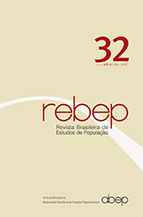Simulation of the maximum number of households allowed by block in Belo Horizonte
Keywords:
Household simulation, Geotechnologies, Dasymetric mapping, Urban sprawlAbstract
This paper proposes a methodology to simulate scenarios of maximum number of households for each city block in the municipality of Belo Horizonte. The parameters used in the simulation were obtained from municipal registration data as well as from the 2000 and 2010 Census results. The simulation is based on geo-referenced data for each municipal block combined with dasymetric mapping of the capital city’s housing distribution in 2011. The study simulates the greatest amount of additional housing that would occur, under the limits of municipal law, if all vacant urban lots were occupied to their maximum capacity, and if buildings now at risk of demolition were substituted by new buildings constructed so as to yield their highest household capacity. The results show the maximum number of households that Belo Horizonte would have if these conditions were achieved. In addition to demonstrating the maximum number of households allowed in each city block, the paper identifies where urban expansion and consolidation is likely to occur. This exercise also provides a contribution to the field of small area population projections. The proposed scenarios additionally help to guide discussions about priority areas and potential alternatives for urban expansion and consolidation, as well as on their implications for urban planning.
DOI http://dx.doi.org/10.1590/S0102-3098201500000030
Downloads
Downloads
Published
How to Cite
Issue
Section
License
Papers published in Rebep are original and protected under the Creative Commons attribution-type license (CC-BY). This license allows you to reuse publications in whole or in part for any purpose, free of charge, even for commercial purposes. Any person or institution can copy, distribute or reuse the content, as long as the author and the original source are properly mentioned.

